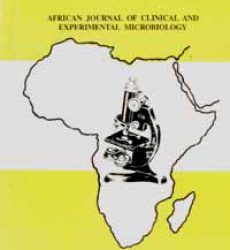Abstract
Human immunodeficiency virus (HIV) infection has created a special niche for Mycobacterium tuberculosis complex in humans as a result of the defect/reduction in cell mediated immunity. M. tuberculosis still responsible for most cases of death due to infectious diseases after HIV. In this study, prevalence of M. tuberculosis was determined in people living with HIV in Osun state of Nigeria with identification of culture positive isolates by polymerase chain reaction. A total of 160 samples were collected from people living with HIV with mean age of 36.8 years old of age (Median -34; age range 16 – 68; 95% confidence interval – 2.49) after seeking ethical approval from the Ministry of Health, Osun State. The result of the microscopy by ZN stain showed that 40 (25%) of the 160 samples were positive for acid fast bacilli while culture on Lowenstein-Jensen (LJ) medium revealed that 30 (18.75%) of the samples processed, grew organism that conformed to the characteristics of M. tuberculosis complex. Polymerase chain reaction for IS6110 was used to confirm the identity of the colonies on LJ slope as M. tuberculosis complex while the PCR for 260 bp of Rv1255c was used in identifying M. tuberculosis. M. tuberculosis represented 92% of the M. tuberculosis complex. The prevalence of M. tuberculosis among people living with HIV was found to be 15% after PCR identification. The effects of socio-demographic factors on the prevalence of TB were analysed. Occupation was found to be associated with the proportional distribution of TB in people living with HIV (X2 = 14.85; p < 0.05). The study concluded that PCR should be integrated into the schema for identification of tuberculosis in reference laboratories in developing countries.
Key words: Molecular identification, Polymerase chain reaction, Mycobacterium tuberculosis complex, Mycobacterium tuberculosis, Prevalence, HIV, Nigeria
Download full journal in PDF below

